Growing dill is a fun and rewarding activity, which you can learn within a few minutes, but it will take a season or two to master.
Dill is an easy herb to grow. However, there are some things you will need to keep in mind depending on whether you want seeds, leaves, or both.
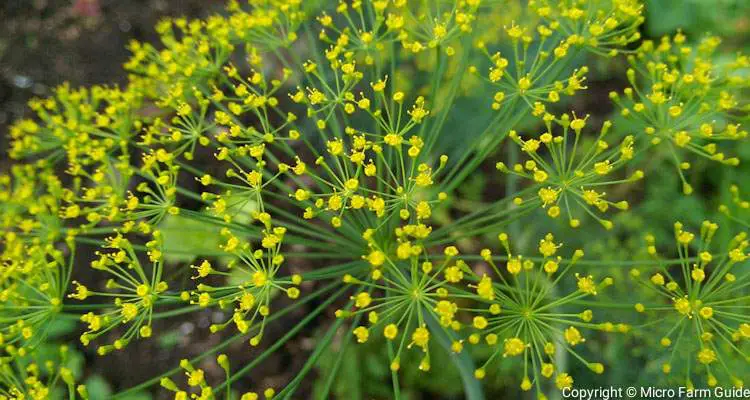
In this article, you will learn how to grow dill at home, including a simple process to care for the plant from seed to harvest. But first, let’s look at some of the basic requirements.
Ideal Growing Conditions For Dill
Dill is a cool-season plant that thrives in temperatures between 65 and 75°F but can survive temperatures as low as 30°F.
Ideally, you should sow dill seeds directly into the garden as soon as the soil temperature is as least 60°F. However, I also like to start seeds in trays and sometimes I grow dill in pots, near to the kitchen.
Dill needs at least 6 hours of direct sunlight per day. Yet still, I’ve noticed that they can grow in partial shade, especially during the dry season here in the tropics.
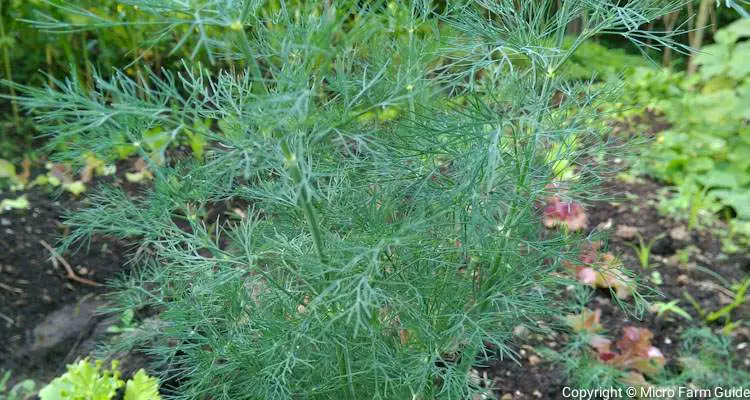
How to Grow Dill From Seed (Planting Guide)
Dill is usually grown from seeds but can also grow from cuttings. However, I have not used cuttings since the plant is easy to grow and produces hundreds of viable seeds. Take a look at the instructions below.
1. Choose A Well Lit Location
Dill needs 6 to 8 hours of direct sunlight per day to thrive. So ensure that your chosen area gets plenty of light.
However, during summer months, or dry spells, dill tends to benefit from dappled light. This provides enough light while protecting the plant from extreme heat.
2. Prepare The Growing Area
Dill grows best in moist, fertile soils. As a result, you should either choose suitable soil or amend the soil with compost or other organic matter.
You can cover the soil with an organic mulch to help retain moisture and keep the soil cool during warmer months.
3. Choose A Suitable Variety Of Dill
Select a variety of dill that meets your needs and growing conditions. Here are some popular types you can consider.
| Variety | Height | Notes |
| Mammoth | 3 feet | Seeds |
| Fernleaf | 18 inches | Leaves |
| Bouquet | 1 foot | Seeds |
| Dukat | 2 feet | Leaves |
| Herkules | 4 feet | Leaves |
Note: All the varieties above produce many seeds and leaves. However, those chosen for leaves tend to grow slower, and allows you to harvest leaves for a while before going to seed.
4. Sow Seed Directly In The Growing Area
Once soil temperature reaches 60°F, sow 3 to 5 seeds about ¼ inch deep and cover lightly.
Water the soil carefully so as not to uncover the seeds. You can also sprinkle a thin layer of compost over the area to act as a mulch.
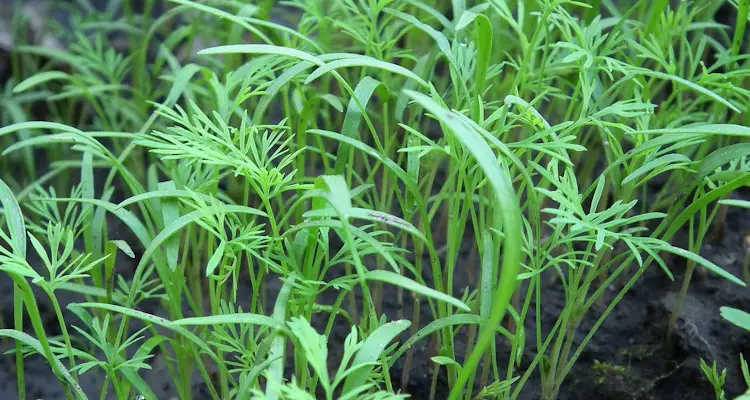
5. Sow Seeds Into Seedling Tray (Optional)
Alternatively, you can sow dill seeds in large cell seedling trays using a quality potting mix.
- Fill the trays with a moist potting mix and punch holes about ¼ inch deep.
- Sow 2 to 4 seeds per hole, cover, and water the seed gently.
- Place the tray in a cool dark spot until the seeds germinate.
5 Tips For Transplanting Dill Into The Garden
Dill seedlings look like little hairy fern plants. They usually take 7 to 14 days to germinate, after which you should ensure that you transplant them before as soon as possible.
- Transplant seedlings while they are 4 to 5 weeks old. The success rate is much higher at this stage.
- Ensure that the soil temperature is at least 60°F.
- Water soil before and after transplanting.
- Space dill seedlings about 12 inches apart in regular garden beds.
- Start pruning dill plants as soon as they are about 8 weeks old to maintain their height and shape. Otherwise, they can grow out of control.
How Tall Does Dill Grow?
Dill can grow up to 4 feet tall. It grows best in moist, well-drained soils with access to direct sunlight.
Under ideal growing conditions, dill can live up to 2 years, making it a biennial with some varieties grown as a short-lived perennial.
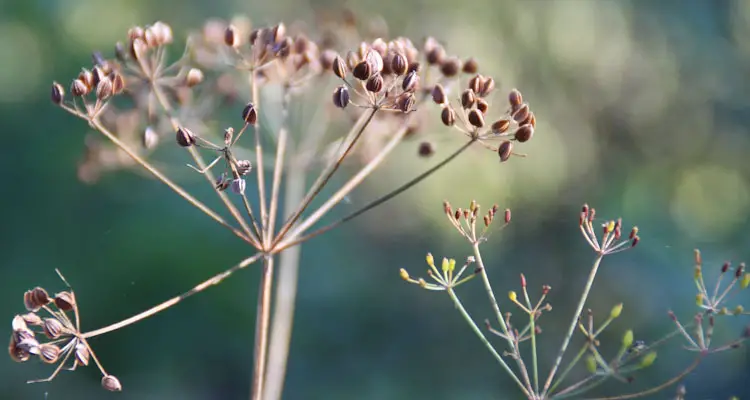
The plant itself is not a perennial but tends to self-seed and can spread throughout the garden if conditions are favorable.
Dill requires consistent moisture and can tolerate brief periods of soggy soil but dies off during prolonged, warm, dry spells.
How To Care For And Harvest Dill
Dill is an easy plant to grow and produces many leaves and seeds without much hands-on intervention.
However, as the plant matures, you will need to occasionally prune them to encourage bushy growth while discouraging the formation of diseases such as powdery mildew.
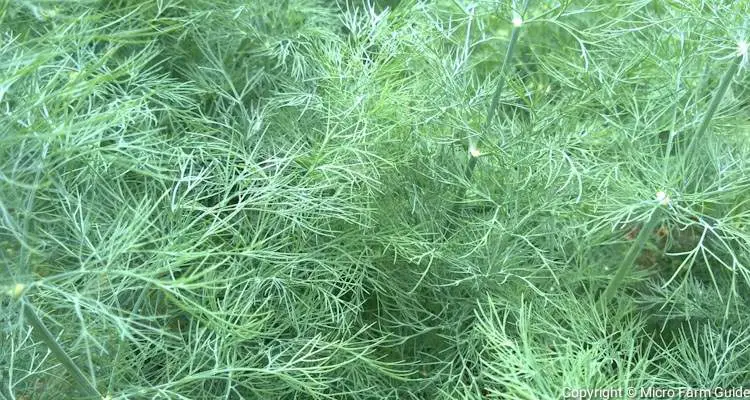
Prune Dill Plants
Remove any old, yellow, or dry outer leaves to prune your dill plants. You can add these to the compost.
Then trim the top of the leaves. This will encourage bushy growth while preventing the plant from flowering. Freeze or dry these leaves for use later.
You can remove individual leaves whenever you need to by peeling them from the stalk; outer leaves first.
Trim the plant back about ⅔ its original height once you see flower buds. This will encourage new vegetative growth and extend the lifespan of the dill plant.
You can also trim the flower stalk to encourage new growth if the plant has already started to flower.
Harvest Dill Seeds
To collect seeds, you will need to wait until the flowers dry, exposing the seed pouches at the ends of the branches.
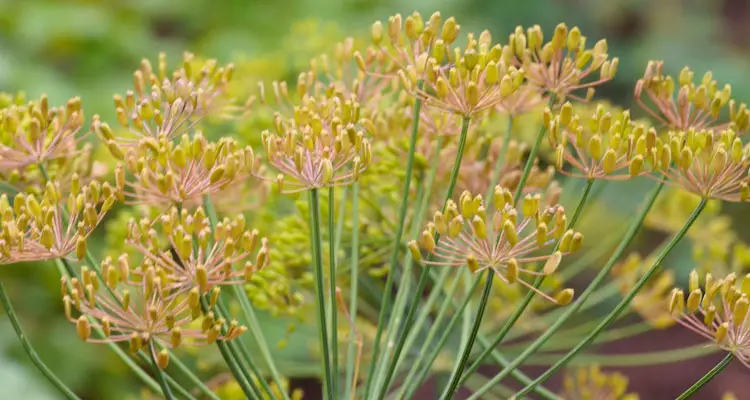
- Leave the seeds to mature and dry on the plant. Then cut the stalk about 4 to 6 inches below the flower head.
- Hang the drying flower head upside down inside a paper bag, and punch holes to allow the free flow of air.
- Allow the seed head to dry for about two weeks when most of the seeds would have fallen into the bag.
- Shake the dried flower head to dislodge the remains of the seeds.
- Pour seeds into a wide, deep bowl. Blow gently to remove seed husks and other debris.
- Place seeds into a container and store them in a cool, dry place such as a cupboard or refrigerator.
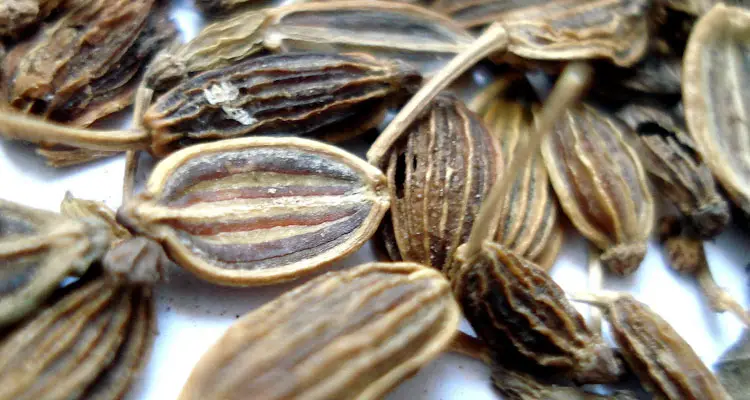
Related Questions
Does dill need full sun?
Dill needs at least 6 hours of direct sunlight daily, provided the temperature is between 65 and 75°F. However, it can survive in partial shade, especially in warmer climates.
How long does it take for dill to grow?
Dill can take up to 2 weeks to germinate and between 4 to 6 weeks to be mature enough to start harvesting. It can grow for up to 2 years, depending on the growing conditions.
Does dill come back every year?
Dill does not return for the same plant every year but usually drops seeds, which will self-sow once conditions are suitable.
